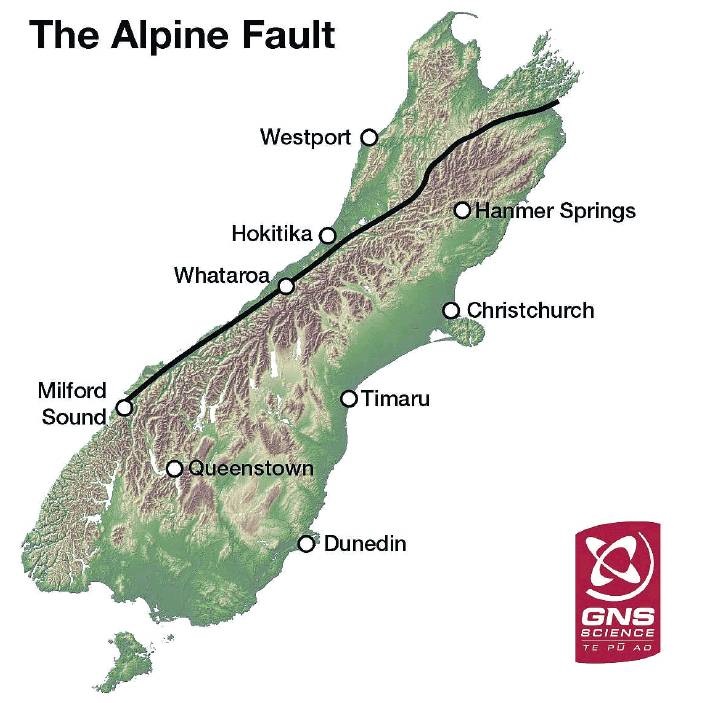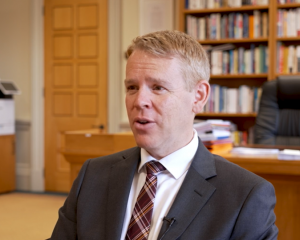Tremors too small to be felt may help scientists learn more about the next major rupture along the South Island’s big-risk Alpine Fault.
As part of a new three-year project, scientists have begun installing the densest network yet of quake-recording equipment along the fault, which runs about 800km up the western side of the South Island between Milford Sound and Marlborough.
By recording small tremors unfolding within the fault, the team, led by Victoria University’s Prof John Townend and Dr Caroline Holden, of SeismoCity Ltd, hope to reveal where slips may take place in a future large earthquake.
They also hope to record ‘‘seismic pathways’’ between the fault and urban centres throughout the South Island to better predict the amount of ground shaking that can be expected in a major earthquake.
Several terabytes of data will be recorded over the next 18 months and then analysed closely.

The fault, marking the boundary between the Pacific and Australian crustal plates, generates earthquakes of magnitude 8 to 8.2 about every 260 years.
The most recent of those was in 1717, and scientists expect the next major rupture will be within a few decades.
Scientists are deploying the equipment - much of which is on loan from the Portable Array Seismic Studies of the Lithosphere facility in New Mexico - around the Franz Josef area next week, before moving on to Haast.
Along with those, the project will draw on more than a dozen existing seismometers operated in the Southern Alps by Dr Emily Warren-Smith, of GNS Science, and Dr Calum Chamberlain, of Victoria University.
Prof Townend expected the study - supported by the Mars-den Fund and dubbed the Southern Alps Long Skinny Array, or Salsa - to significantly boost our understanding of the fault’s behaviour.
‘‘Once we have collected all the data, we can examine the characteristics of very small earthquakes and consider what they tell us about future large earthquakes and how the three-dimensional geological structure of the South Island affects earthquake shaking,’’ he said.
‘‘The methods we are using enable us to analyse ground shaking throughout Tai Poutini West-land and across southern and central New Zealand in response to many more earthquake rupture scenarios than can be practicably studied using conventional approaches.
‘‘This will provide us with robust estimates of the shaking that will occur in future large Alpine Fault earthquakes.’’
Dr Holden said the high instrument density near the fault would provide insights in unprecedented detail.
Each seismometer will be buried in a hole up to a metre deep and placed on a layer of clean sand and a paving stone, and attached to a data-logger, a GPS sensor and a solar-power system.
Equipment installed on farmland will be fenced in to stop curious stock from damaging it.
Wire mesh will also be used, as will plastic conduits for unburied cabling, so that kea and other wildlife do not interfere with the equipment.
The study comes after new evidence gleaned from past earthquake behaviour led scientists to revise the chances of a major Alpine Fault rupture within the next 50 years from 30% to 75%.
They also calculated an 82% chance the resulting quake would measure greater than 8.0.
- By Jamie Morton












